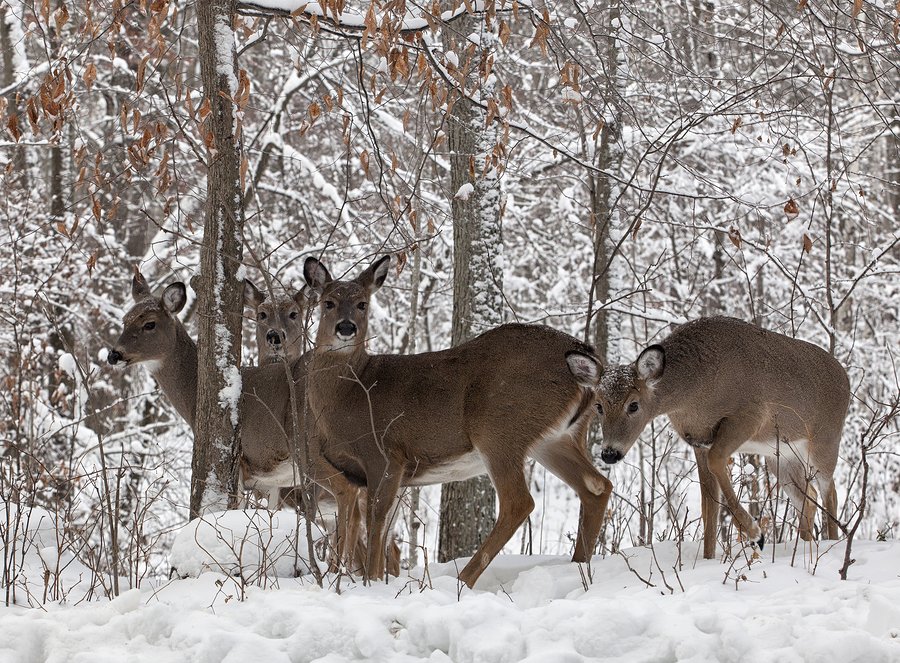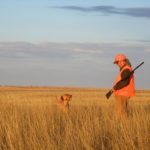Once again, the Minnesota DNR is reporting that illegal baiting tops the list of deer hunting violations during the firearm season. The baiting prohibition has been on the books for years, so ignorance of it is no excuse. Instead, people choose to risk arrest, confiscation of their firearm and the loss of hunting privileges to attempt to shoot a deer attracted to a bait pile. Since the risk seems to outweigh the potential reward—a few pounds of venison—you have to wonder why they make that choice.
Maybe the reason is simply this: They lack the confidence (or skill) to actually hunt for a whitetail. In a society accustomed to instant gratification, baiting may seem the easiest way to get your deer. When it comes to poaching, easy almost always does it.
Baiting may be easy, but what kind of story is left to be told once the shooter (let’s avoid the term ‘hunter’) pulls the trigger? The kill is an unceremonious execution. Whatever emotion or satisfaction the shooter feels afterward is like an empty sugar high.
In contrast, a day of actual hunting is often punctuated with little adventures, leaving a hunter with plenty of stories to tell. For instance, just before sunset on opening day, I was ‘charged’ by a doe that bounded right by me, passing about 30 feet to my right, oblivious to my presence. Something was chasing her, either a wolf or a buck. Thus forewarned, I got ready for action.
Within moments, that something appeared, but it was coming through thick brush to my left. In the dim light, I could make out a large, gray body and a mass of white over its head—a nice buck. I swung my rifle forward to the first opening where I could get a clear shot. The buck must have seen my movement, because just before reaching the opening it blew in alarm and kicked into high gear. I took the shot I had, not the one I wanted. Through the brush, I watched the deer barrel across a small beaver meadow and disappear into the balsams. I caught a flash of white, it’s upright tail flagging alarm. In my experience, a wounded deer usually runs with its tail down.
I walked over to where the deer was positioned when I fired. With no snow, it was difficult to determine the buck’s path. I found no blood. Then I crossed the beaver meadow, still finding no blood. Nor did I find any beneath the balsams where the buck disappeared. I made some circles in the conifers in the fading light, but found no sign of the deer.
I was back there again at dawn. This time, I found some clipped hair a few feet beyond where I shot at the deer. But that was it. I searched the area until lunch time and found nothing more. What I did discover was that I’d stumbled into the exact place where the buck had been hanging out. Rubs and scrapes were numerous. The wet ground was churned up with tracks. I returned there a couple of more times in the following days. To the best of my knowledge and ability, the buck is still making tracks.
On a snowy morning a few days later, I had a similar experience. A yearling doe came out of nowhere and blasted by me. With her ears laid back and her tail down, she looked like an arrow. I got ready for whatever was after her. Out came a wolf, bounding hard as it chased the doe. I stood, waiting and listening for a few minutes, sure I would hear the kill if the wolf caught the doe. I think she got away. Then I walked over to examine their tracks in the snow. Both animals passed within 40 feet of me.
It is hard to describe the intensity of this life and death drama. The wolf and I have something in common: we are both predators. But the commonality stops there. My act of predation is bounded by law and completed using a modern firearm. When unsuccessful, I return to a warm house and a freezer full of food. The wolf abides by the ways of its pack, which exists to work as a team and provide for all. Its act of predation is intimate and violent. When the wolf fails to make a kill it keeps hunting, because it must.
The doe appeared to be somewhat faster than the wolf, as she must be to stay alive. I wonder how many times in the course of a North Shore deer’s life it must run to escape the wolves, until the day arrives when it makes an error or isn’t quick enough to get away. After witnessing this moment in the lives of two wild animals, I walked away with greater respect for both the wolf and the deer.
It turned out we were sharing our hunting spot with the whole pack that morning. A plethora of wolf tracks showed that my friend and I had walked into the wolves’ deer drive. We hunt far more slowly than they do. My friend observed that in golf jargon, the wolves “played through.” He saw one that morning as well.
When you hunt in wolf country, you take such happenings in stride. I’ve seen instances when the wolves chased the deer out of a particular area for a day or two. At other times, the deer seem to avoid them. No doubt the whitetails are keenly aware of the times when wolves are in the hunting mode.
Some hunters complain about wolves or blame them for their lack of success. Not me. In fact, I have little interest in hunting someplace that isn’t wild enough to support wolves or other apex predators. I hunt for food and the opportunity to shoot a nice buck. Whether I kill a deer or not, I always come out of the woods with a story to tell. To me, that’s what deer hunting is all about.




